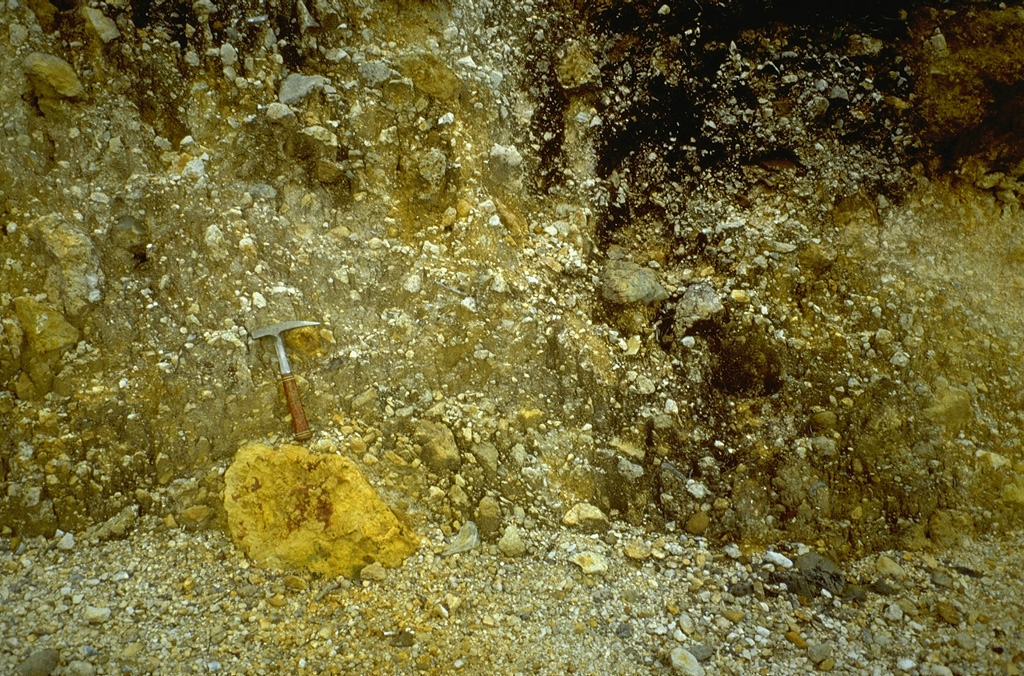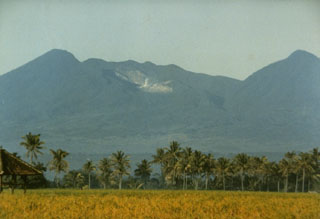Global Volcanism Program | Image GVP-01048

The debris-avalanche deposit produced by the 1772 collapse of Papandayan volcano contains abundant angular clasts including the sulfur-rich clast beneath the rock hammer, in a hydrothermally altered, clay-rich matrix. Extensive thermal alteration of rocks within the volcano had occurred prior to the collapse.
Photo by Lee Siebert, 1995 (Smithsonian Institution).
![]() This image is made available under the Public Domain Dedication CC0 license, but proper attribution is appreciated.
This image is made available under the Public Domain Dedication CC0 license, but proper attribution is appreciated.
Keywords: sulfur | debris avalanche deposit

Papandayan
